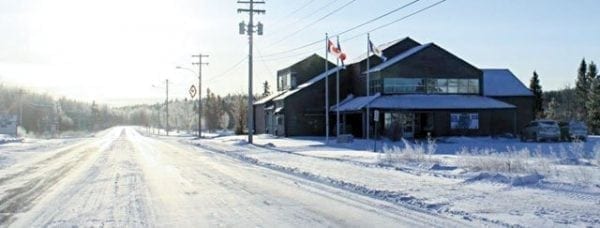A slate of new housing programming means social housing tenants may soon have the option to purchase their homes and homeowners across the NWT will have access to forgivable loans for new fuel tanks, among other programs, according to an Oct. 17 announcement.

These changes are in reaction to a housing survey the corporation conducted earlier this year, said Caroline Cochrane, minister responsible for the NWT Housing Corp., when she made the announcement in the legislative assembly.
“We still have much more to do,” said Cochrane, indicating there will be more changes to come over the next two years.
These changes come at a time when the future of the housing corp.’s major federal funding, delivered by the Canada Mortgage and Housing Corporation, is unsure.
The corporation is already feeling the squeeze. The funding, which pays for operations and maintenance of the NWT Housing Corp.’s 2,400 social housing units, has dropped to $14.5 million in the current fiscal year, 2017-2018, from $21.2 million in 2003-04, excluding debt amortization.
The funding is set to dry up completely by 2038-39.
“It really impacts us in the North when in some communities we’re the sole provider of housing,” said Tom Williams, president of the housing corp. “Outside of … the regional centres, we’re the only game in town in some cases.”
If no new funding is announced, the housing corporation will have very little means to keep up with the maintenance of its units. As well, current funding allows the corporation to only maintain an inventory of 2,400 units.
To add more units to its inventory, the corporation would need new money.
“We’re different from, say, Toronto, which has the private sector operating social housing, and other different avenues for social housing,” said Williams.
In the meantime, the housing corporation has been selling or demolishing old homes that would be uneconomical to repair. Last year, 31 were sold—to either individuals or community governments—and 30 were demolished. Fifty-six are planned to be disposed of, in either fashion, this year.
As well, the federal government recently gave the housing corp. a limited amount of money to provide housing for homeless people. This is paying for the renovation of four-plexes is each of four communities—Aklavik, Behchoko, Fort Good Hope and Fort Simpson—to become independent living units, in partnership with local community governments.
When the housing corporation has the chance to build new units within its inventory quota, after offloading others to make room, it tends to do so in the fashion of duplexes or four-plexes, said Williams, as these are much more economical.
There is, however, a chance that the federal government’s upcoming, inaugural National Housing Strategy will provide new money. Set to be released this fall, the strategy will come with $11.2 billion to be spent across the country over 10 years.
The feds were mum on what might be in store for the NWT in this strategy. In response to News/North’s request, Emilie Gauduchon-Campbell, press secretary for Yves Duclose, the minister responsible for the CMHC, listed instead what the current government has already invested in Northern housing budgets.
She did concede that the Northern situation calls for special measures.
“Our government recognizes that households in the NWT endure some of the most challenging housing conditions in Canada,” wrote Gauduchon-Campbell.
